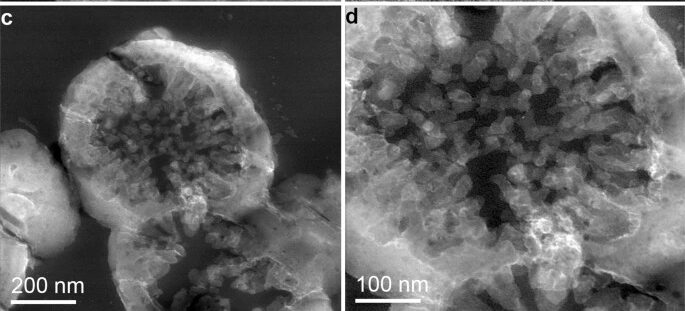Rocks from Mars aren’t important for a normal human being. But for someone like us who has a lot of interest in Science, these rocks play an important role in our studies. Until now we have collected chunks of meteorite, dislodged from the red planet and travelling through the Solar System until they smack into Earth.
Scientists used a small piece of this (a small piece of the Martian Black Beauty meteorite) to grow extremophile microbes.
This not only proves the possibility of life on Mars but also gives astrobiologists new biosignatures they could use to look for signs of ancient life in the crust of Mars.
The Black Beauty is among the rarest substances on Earth, it is a unique Martian breccia formed by various pieces of Martian crust.

Astrobiologist Tetyana Milojevic of the University of Vienna in Austria said that they chose a bold approach of crushing a few grams of precious Martian rock to recreate the look of Mars’ earliest and simplest life form.
If ancient life existed on Mars, then of all the life on Earth, it’s most likely to resemble an extremophile. These are organisms that live in conditions we once thought too hostile to support life, such as subzero, super-salty lakes in Antarctica, or volcanic geothermal springs, or Earth’s lower crust, deep beneath the seafloor.
One thing we know is that long ago the atmosphere on Mars was thick and rich of Carbon Dioxide.
On Earth, we have chemolithotrophs that can fix carbon dioxide and convert inorganic compounds (such as minerals) into energy. The team looked for similar organisms, assuming Mars too had some.
The microbe they selected was Metallosphaera sedula, a thermoacidophilic Archaean found in hot, acidic volcanic springs. They placed the microbe on the Martian Mineral in a bioreactor that was carefully heated and gassed with air and carbon dioxide.
They observed using microscopy how the microbe used and transformed the material in order to build cells, leaving behind biomineral deposits.
Milojevic added that grown on Martian crustal material, the microbe formed a robust mineral capsule comprised of complexed iron, manganese and aluminium phosphates.
They also observed massive encrustation of the cell surface along with the intracellular formation of crystalline deposits of a very complex nature (Fe, Mn oxides, mixed Mn silicates). These were not observed before, even when they’ve grown the same microbe on terrestrial mineral sources and a stony chondritic meteorite.
The Perseverance rover, which last week arrived on the red planet, will be looking specifically for just such bio signs.
The research also highlights how important it is to use real Martian samples to conduct such studies, the researchers said.
“Astrobiology research on Black Beauty and other similar ‘Flowers of the Universe’ can deliver priceless knowledge for the analysis of returned Mars samples in order to assess their potential biogenicity,” Milojevic said.
Journal Reference:
Milojevic, T., Albu, M., Kölbl, D. et al. Chemolithotrophy on the Noachian Martian breccia NWA 7034 via experimental microbial biotransformation. Commun Earth Environ 2, 39 (2021). DOI: 10.1038/s43247-021-00105-x

